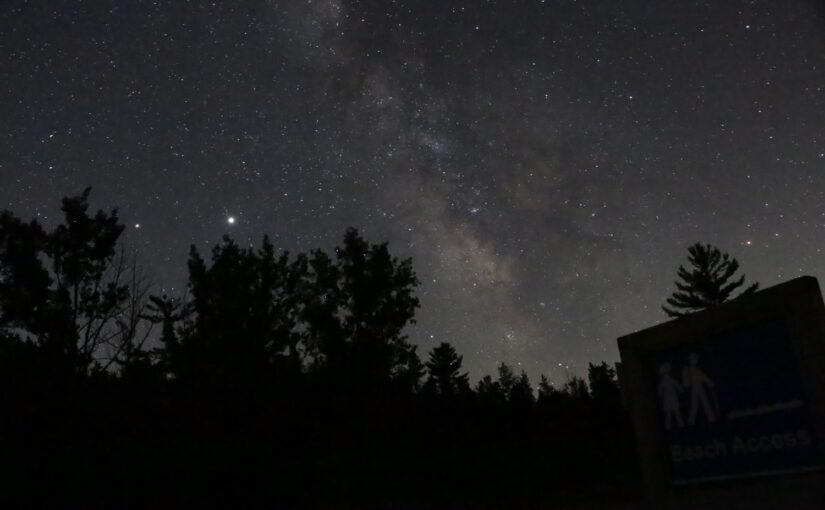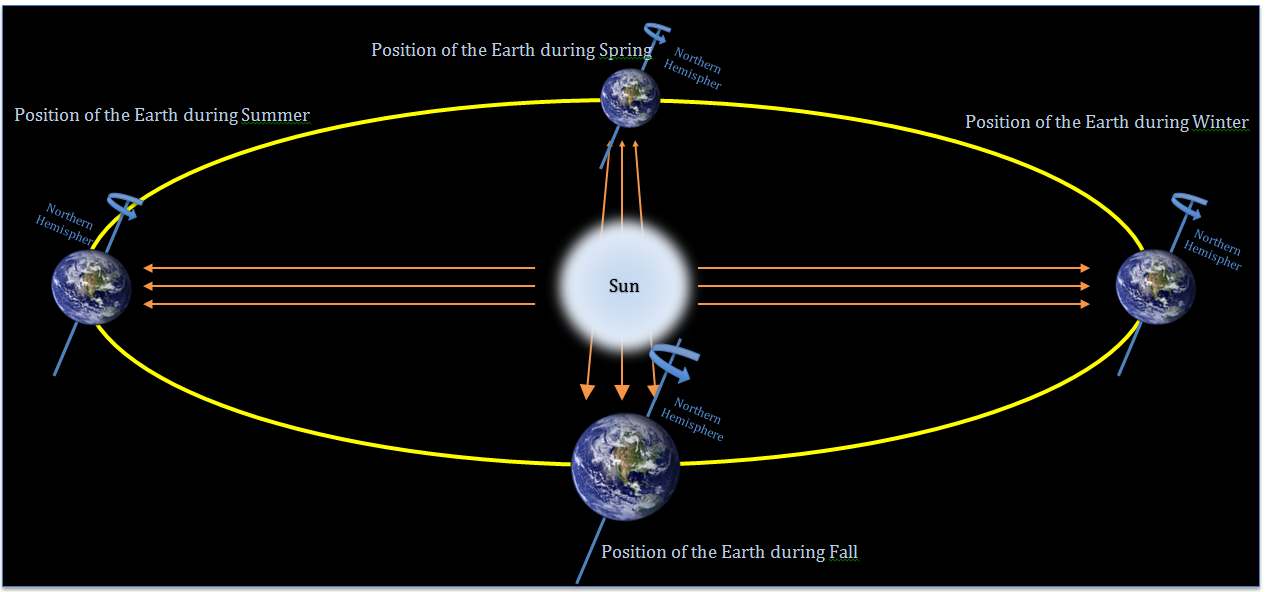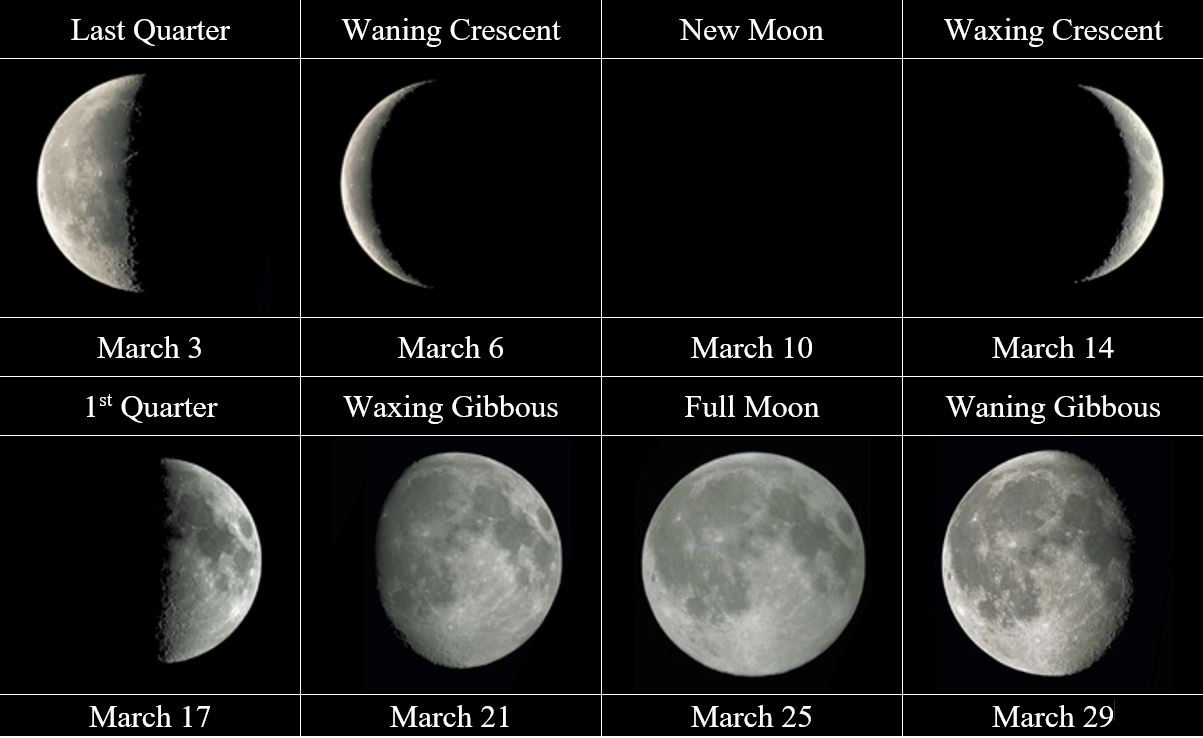Welcome to the Ontario Parks “Eyes on the Skies” series. This space (see what we did there?) will cover a wide range of astronomy topics with a focus on what can be seen from the pristine skies found in our provincial parks.
March is one of the most glorious months to be camping, or even just spend time outdoors enjoying our parks.
On March 19, the earth passes through Spring Equinox. This is the day that formally marks the beginning of spring and affords equal hours of sunlight and darkness.
Here are our astronomical highlights for March:
The sun
Sunrise and sunset times
| March 1 | March 15* | March 31* | |
| Sunrise | 7:03 a.m. | 7:37 a.m. | 7:06 a.m. |
| Midday | 12:38 p.m. | 1:34 p.m. | 1:30 p.m. |
| Sunset | 6:13 p.m. | 7:32 p.m. | 7:54 p.m. |
*Eastern Daylight Time
Most places in North America will put their clocks forwards (“spring ahead”) on the early morning of the second Sunday in March.
This year, Ontarians will move their clocks forwards by one hour at 2:00 a.m. on the morning of Sunday, March 12.
In March, the orbit of the Earth around the sun and the tilt of its axis of rotation provides us the observation of the Spring Equinox, when the sun appears to lie on the celestial equator (an imaginary extension of the Earth’s equator into space).
The equinox (when the sun appears to be directly over our equator) will take place at 11:03 p.m. on the night of March 19.
Around this time of year, there are equal amounts of daylight and night.
Interestingly, the equinoxes (both spring and fall) are not the days on which we have equal day and night. This year’s spring equinox date falls on March 17. This is due to a few factors, including that the fact that sunrise and sunset are not measured from the centre of the sun but, rather from the point in which its upper edge rises or sets above or below the horizon.
The moon
The moon has long captivated observers of all ages.
March’s lunar phases of the moon occur as follows:
The planets — Jupiter
Jupiter is well placed in the western sky at sunset but sets earlier and earlier until, by month’s end, it sets only two hours after the sun.
But don’t worry, Jupiter’s visibility follows a roughly 12 year cycle and this fall/winter will place it very high in the sky once again!
Comets and meteor showers
March is a quiet month from a meteor shower perspective. Nevertheless, observers are always able to see sporadic (random or unidentified shower) meteors as they may occur.
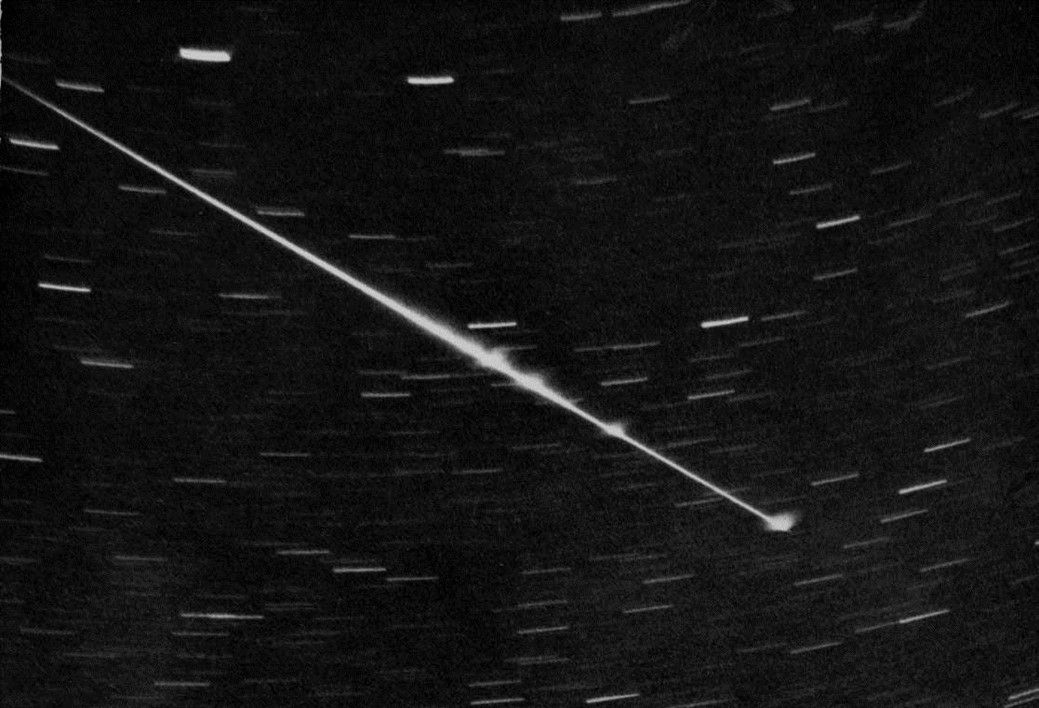
On any given night, in the dark skies of provincial parks, one might see as many as five to 10 meteors per hour, especially after midnight.
March constellations
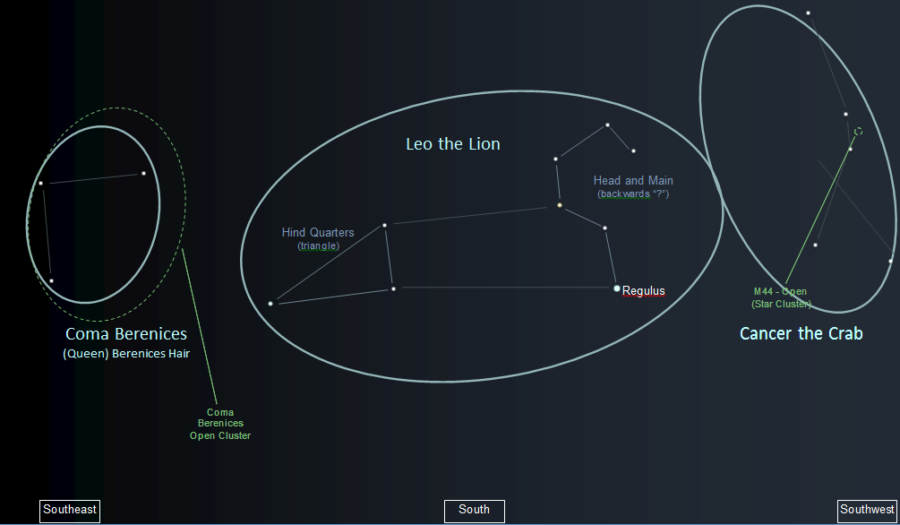
In last month’s blog, we discussed Gemini the Twins, as well as two other prominent constellations seen in the winter.
This month’s post will focus on three constellations that mark the transition from winter to spring: Leo the Lion, Cancer the Crab, and Coma Berenices.
